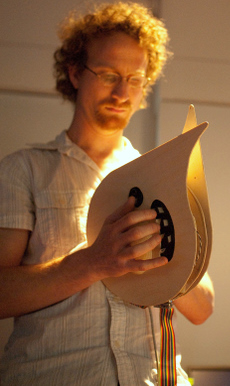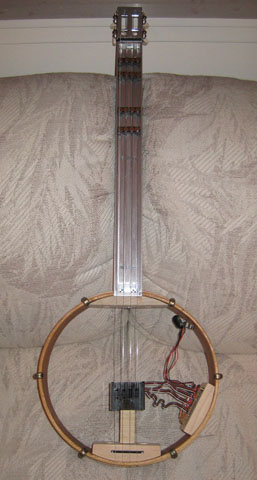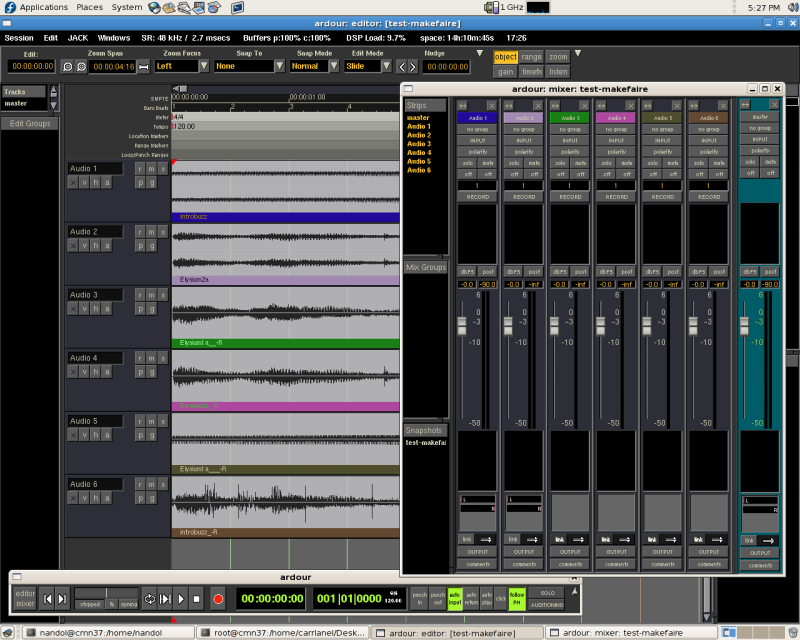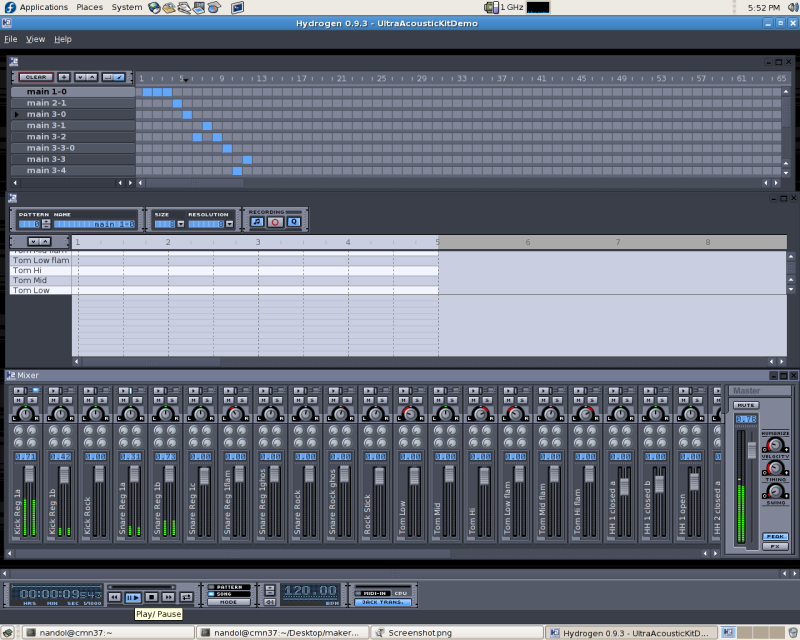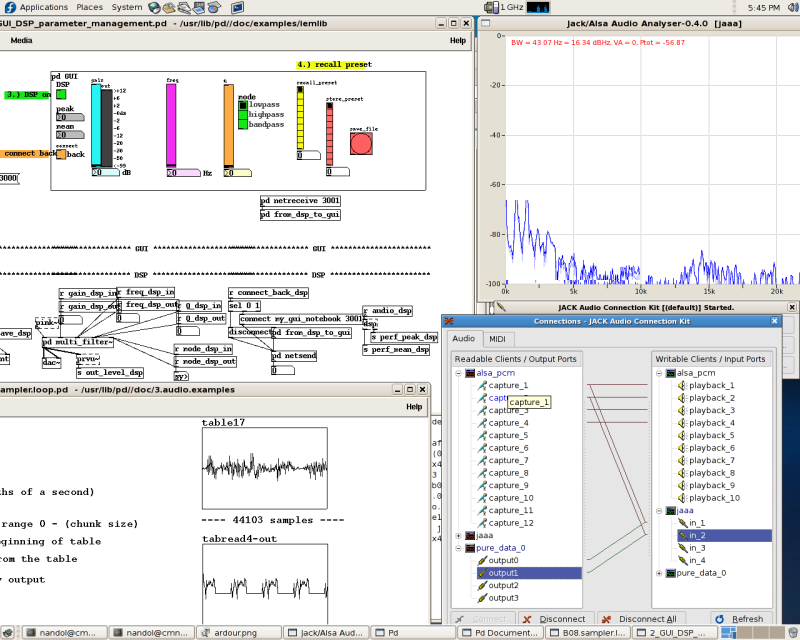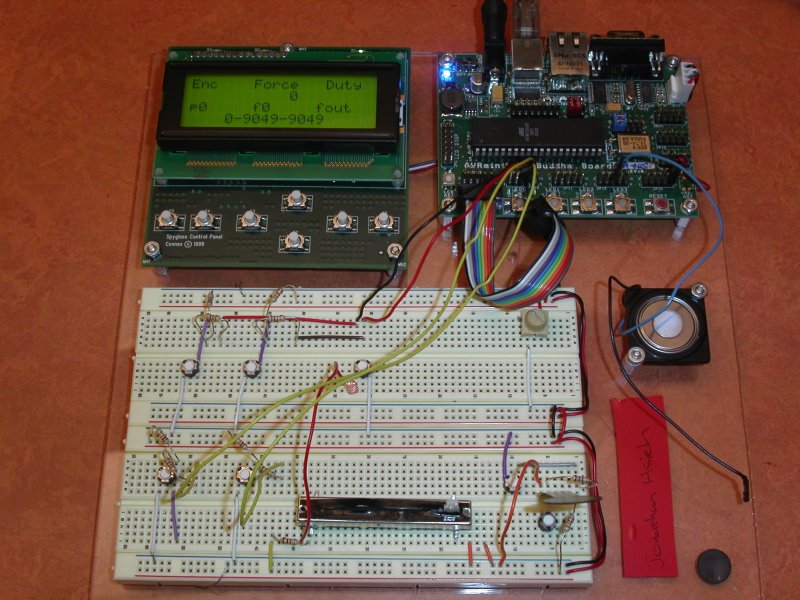MakerFaire
Contents
Introduction
The Center for Computer Research in Music and Acoustics (CCRMA -- pronounced "karma") is an interdisciplinary center at Stanford University dedicated to artistic and technical innovation at the intersection of music and technology. We are a place where musicians, engineers, computer scientists, designers, and researchers in HCI and psychology get together to develop technologies and make art. In recent years, the question of how we interact physically with electronic music technologies has fostered a growing new area of research that we call Physical Interaction Design for Music. We emphasize practice-based research, using DIY physical prototying with low-cost and open source tools to develop new ways of making and interacting with sound. At the Maker Faire, we will demonstrate the low-cost hardware prototyping kits and our customized open source Linux software distribution that we use to develop new sonic interactions, as well as some exciting projects that have been developed using these tools. Below you will find photos and descriptions of the projects and tools we will demonstrate.
Magnjo - The Magnetically Augmented Banjo
Magnjo is a fretless banjo that has magnets under its fingerboard to provide haptic feedback to a performer. The magnets are oriented in harmonic locations (similarly to frets) to inform the performer of tonal locations along the string. In order to feel the magnets, the performer must wear finger wrappings with iron fabric in them. Thus the performer's fingers are informed of the locations along the fingerboard corresponding to notes in the chromatic scale.
Haptic Drum
The word haptic comes from Greek and pertains to the sense of touch. The haptic drum harnesses the power of force-feedback to assist drummers in playing parts that would otherwise be difficult or impossible. This patent-pending device consists of a drum pad, a DSP, an amplifier, and a woofer. Whenever a drumstick impacts the drum pad, the woofer gives a small push in the upward direction, adding energy to the bouncing drumstick.
Kalichord
The Kalichord is a two-handed electro-acoustic instrument which acts as a controller for a physical string model. The user plucks virtual strings with one hand while playing bass lines with the other.
GRIP MAESTRO
The GRIP MAESTRO is a hand-exerciser that has been modified into a resistive one- or two-handed musical controller. The GRIP MAESTRO Mach 1 uses magnets and Hall Effect Sensors to detect the position of each of the exerciser's six pad-springs and sends this information to ChucK to drive musical synthesis, or other sound manipulation. The GRIP MAESTRO Mach 2 (presently in development) expands on this control structure by adding accelerometer data into the mix and by giving the player two GRIP MAESTOs, one for each hand. The goal of this interface is to provide real force resistance as feedback to the performer and thereby establish an engaging relationship between the performer and his/her audience.
Software Tools
Planet CCRMA at Home is a collection of open source programs that you can add to a computer running Fedora Linux to transform it into an audio/multi-media workstation with a low-latency kernel, current audio drivers and a nice set of music, midi, audio and video applications (with an emphasis on real-time performance). It replicates most of the Linux environment we have been using for years here at CCRMA for our daily work in audio and computer music production and research. Planet CCRMA is easy to install and maintain, and can be upgraded from our repository over the web. Bootable CD and DVD install images are also available. This software is free.
http://ccrma.stanford.edu/planetccrma/software
Ardour - Multitrack Sound Editor
Hydrogen - Drum Sequencer
Pd, Jack and Jaaa - Real-time audio tools
Hardware Tools
In our courses, we use a prototyping kit based on Atmel AVR microcontrollers, with Pascal Stang's AVRmini at the core. To the AVRmini, we attach an I2C LCD display, solderless breadboard strips, a loudspeaker and sometimes a MIDI jack. In student lab exercises and for prototyping, we hook up sensor circuits on the breadboard and send control signals to a Linux PC over USB, serial, MIDI or Ethernet in order to control open source real-time sound synthesis and processing software. These prototypes are then often built into larger-scale music and interactive sound art projects like the ones below that we will demonstrate at the Maker Faire.
